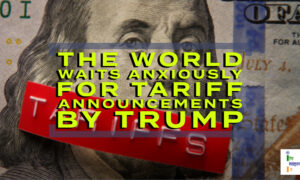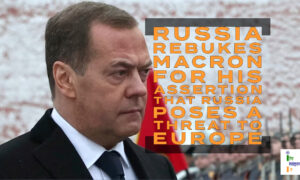
The new package of EU sanctions on Russia could mean a loss of € 11 billion in trade to the country
The representatives of the 27 European Union (E.U.) countries meet in Brussels today, i.e., Wednesday, February 15, 2023, to discuss the 10th package of sanctions on Russia, which could mean a loss of € 11 billion (U.S. $ 11.8 billion) in trade.
The bloc is expected to agree to new sanctions to mark the one-year of Russia’s invasion of Ukraine. However, all the Member States have to agree to the sanctions.
Speaking on the occasion, the President of the European Commission – Ursula von der Leyen said, “We are weakening Russia’s ability to maintain its war machine. We have adopted nine packages of sanctions, the Russian economy is shrinking.”
She further said, “We’re talking about 11 billion euro. We are suggesting restrictions on some dual-use and electronic components used in Russian armed systems such as drones and missiles and helicopters.”
Taking it to twitter, Ursula tweeted,
For almost a year, Russia’s war of aggression has been sowing death and destruction.
— Ursula von der Leyen (@vonderleyen) February 15, 2023
We are making Russia pay.
Today, we are turning up the pressure with a 10th package of sanctions.
https://t.co/ufC6zOqKyJ
She further tweeted,
We are weakening Russia’s ability to maintain its war machine.
— Ursula von der Leyen (@vonderleyen) February 15, 2023
Our 10th sanction package contains trade bans and controls on technology exports worth €11 billion.
Russia is using hundreds of Iranian-built drones.
We propose to extend our export controls to Iranian entities. pic.twitter.com/VuLc60YlaY
As per the 10th package, the E.U. countries should cut 4 more Russian banks, including the private Alfa-Bank, the online bank Tinkoff and Rosbank from the global messaging system – Society for Worldwide Interbank Financial Telecommunications (SWIFT).
Rubber and asphalt will be added to the E.U. list of barred imports from Russia and the bloc would ban Russia Today’s Arabic service from its territory. Further bans on exports are meant to stifle Moscow’s ability to produce arms and equipment deployed against Ukraine. They would also include electronic circuits and components, thermal cameras, radios, heavy vehicles, steel and aluminium used in construction and machinery serving industrial and construction purposes. The European Commission has also proposed further restrictions on European joint ventures with Russia and Russian nationals sitting on boards in Europe.
The bloc aims to implement new sanctions and close loopholes in existing sanctions, including tighter controls on selling satellite data to China, which they believe is being passed on to Russia. The E.U. will also target Iranian economic operators including those linked to the Revolutionary Guards as Russia is using Iran supplied drones in Ukraine.
The E.U. is also looking at additional reporting obligations to better track Russian assets in Europe. The E.U. has so far located around € 33.8 billion worth of Russian central bank assets on its territory.







